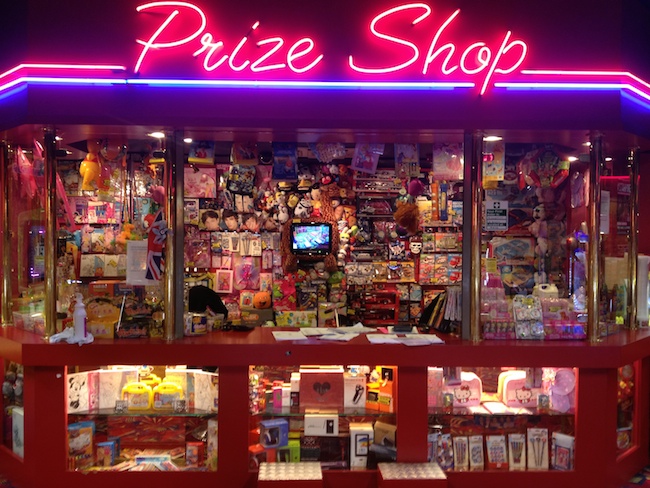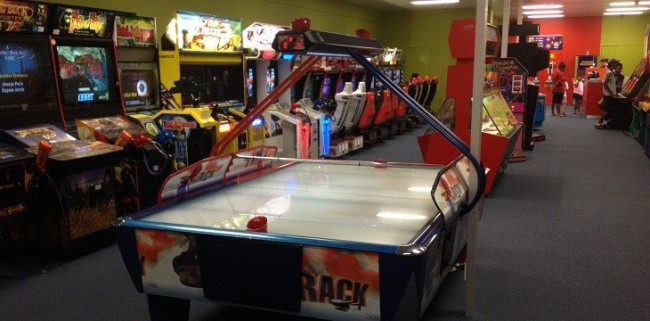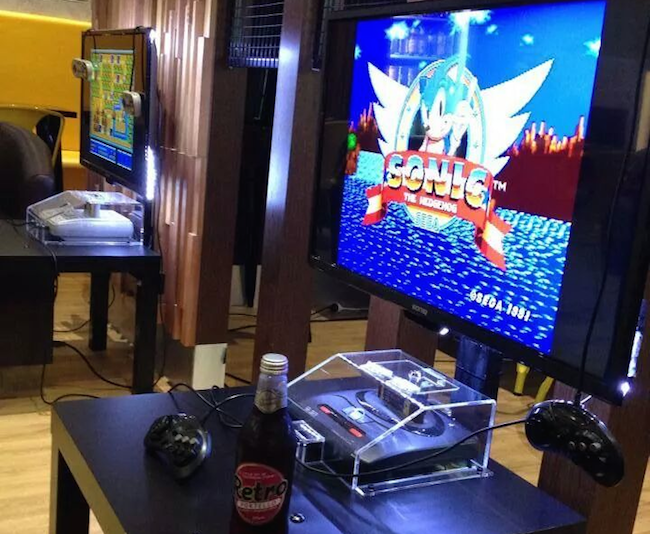
This article was intended to be two things: a retrospective look at video game arcades and what potential future they might have in modern society, as well as an unbiased comparison between the modern gaming arcades that we see today. During the course of some necessary research, however, I found myself genuinely relishing my time spent at several arcades much more than I had anticipated. As for being unbiased, I have to be upfront and admit that one site serves a rather epic “cheesie” – my second favourite slab of carbs and dairy.
Let’s start with what they were: scream filled, seizure-inducing, money pits where kids ran rampant. The games were cheap and gave us a chance to enjoy local multiplayer with whoever was available. Over the school holidays, arcades had the magical ability of counting as “getting out of the house and away from the screen,” and almost equaling a workout. Those of us that played for the opportunity to make the scoreboard, say as many rude things as three letters allowed, were happy. If we played for tickets and prizes, we usually weren’t letdown either; $5 allowed us several games and enough tickets for lollies, a spud gun and a metal slinky, and we all know the value of a good slinky.

How do today’s big name arcades measure up? The most notable change is that you get none. Change, that is. $5 on a swipe card (tokens are long gone) won’t get you five games, depending on how high tech the game is you’ll get 1 to three maximum for that money. Sure, it’s all inflation and the cost of living yada yada, but you can’t tell me they are spending more on the prizes these days. Slinkys are now plastic FYI, and a good one lasts almost the whole way home. On the positive side though, the big centers sustained their feel and offer the same experiences for the players. The core of an arcade is to provide an array of gaming fun in a social setting that you can’t get from home.
Access to games and a myriad of ways to play is the biggest pull for arcades, therefore, improving, instead of changing, is what is working in favour of the big guys. The always popular shooters, racing games and skill testers have all had facelifts, and some T2 upgrades to make them worthy of today’s Arcadians. Technological advances allow for touch screens, sensors and even AR reliant titles to be common amongst the traditional staples. By mixing plenty of newer options in, without entirely spiriting away the older examples, the bigger franchises have opened up to a wider demographic. By maintaining this balance, their popularity doesn’t look like it will slip anytime soon. When I chatted to parents at several locations, we discussed the average they’d spend, almost none thought it was good value, but all agreed it was impossible to say no to a trip to the arcade.

For those of us that don’t want screaming midgets or the chance to swap digital tickets for a plastic parachute man, there is another option: the modern-retro arcade with a cafe attachment, henceforth known as “Cafcades.” These smaller venues, in more hidden locations, have had a slow but inevitable manifestation, and for good reason. Their skill testers are full of tech-candy, nostalgic games and joysticks are everywhere, and they offer more of an adult friendly environment. By that, I mean Wi-Fi and caffeine, of course. Cafcades promote cozier setups where Arcadians are encouraged to hang around, play the latest consoles on the big screen, and take their time. This kind of laid back approach may by sans prize tickets, but it serves as an almost homey environment for Arcadians to do what they love. Many cafcades are somewhat underground, one of them literally, but they will have a steady increase in popularity without a doubt.
After spending plenty of research hours and dollars in the larger arcades and the smaller, harder to find cafcades, I still don’t have a definitive favourite. Granted, after playing around in the mainstream arcade I need some quiet time to recover from spending an entire paycheck in 12 minutes, but it’s always loads of fun. We find new games constantly and it’s impossible to leave grumpy; just don’t think too hard about the $2 in crappy toys you ‘won’ from spending $40 on a swipe card. Conversely, the cafcades are in a class of their own; one day I played an SNES that took tokens while enjoying a freshly cooked lunch at my table, the next day an impromptu FIFA match went on via the big screen. It’s encouraging too, to see how many people actually win decent loot, just another reason why cafcades are holding their own against the chain arcades.

Progress in any aspect of the gaming industry is always wonderful, but in their very diverse ways, both types of arcades have a place today. These completely different sanctuaries are like comparing Nintendo to an indie developer: they don’t offer the same thing and should be wholly enjoyed and judged for the best of what they each offer. When I want to go nuts with my son and teach him about Golden Gun and Time Crisis while swiping up a storm, then we join the throngs at the big arcade. If I have a lunch break and want caffeine while I play the AC/DC pinball machine and debate the best Zelda game with a stranger, then I’m in good company at any Cafcades. I will always be happy to support my local cafcades, especially those with cheesie-maker savants, but I’m not quite ready to throw out my stash of prize tickets, you never know when you’ll need a slinky, after all.











